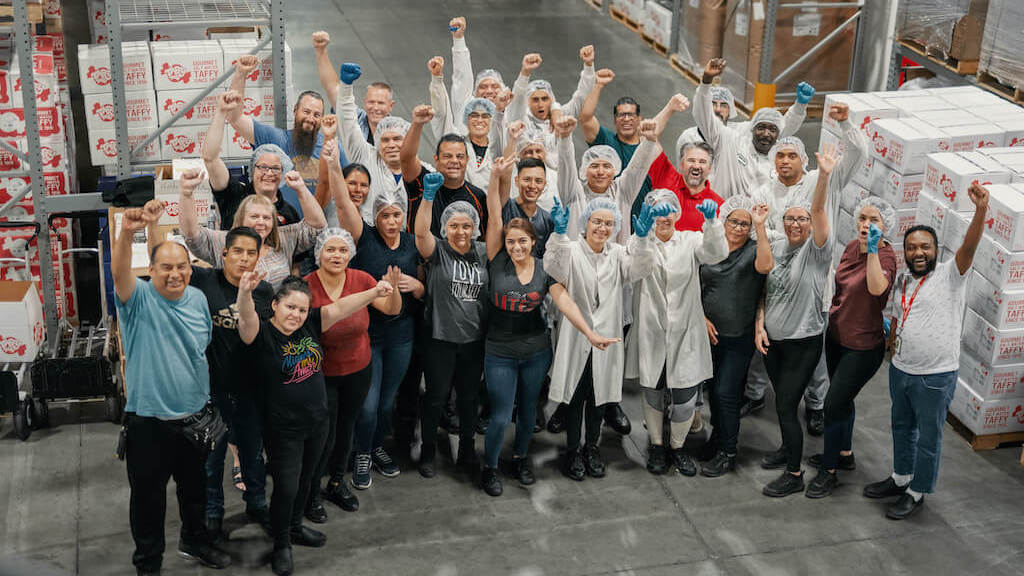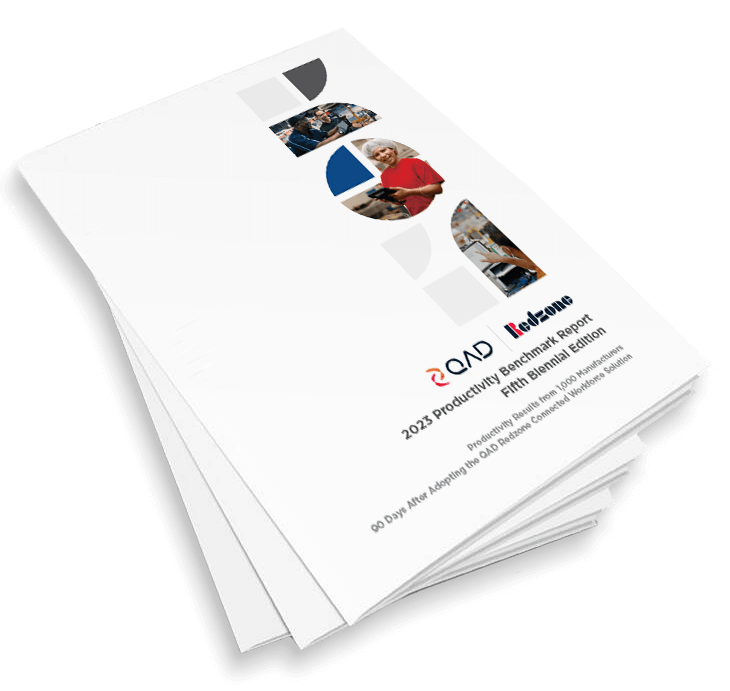Lesen Sie die inspirierenden Berichte von den Gesichtern der Fertigung: die Topmitarbeiter in der Produktion. Mehr erfahren
John Ponte
May 20, 2025

In der heutigen, sich schnell entwickelnden Welt hat die Technologie die Art und Weise, wie wir leben, arbeiten und miteinander interagieren, grundlegend verändert. Das Internet und intelligente Geräte sorgen dafür, dass wir jederzeit miteinander verbunden sind – wenn wir Essen bestellen, mit unserer Familie über die sozialen Medien in Kontakt bleiben, uns einen Film ansehen oder Zeitungsartikel lesen. Dieses Maß an Vernetzung erstreckt sich sogar auf die Fertigungsindustrie, und das Potenzial der digitalen Technologien, die Branche zu einer modernen vernetzten Belegschaft zu revolutionieren, ist enorm.
Auf dem Weg zu einer stärker vernetzten Welt kann die Bedeutung der vernetzten Belegschaft gar nicht hoch genug eingeschätzt werden. Vernetzte Mitarbeiter sind mit den neuesten digitalen Tools und Technologien ausgestattet, die es ihnen ermöglichen, intelligenter, effizienter und genauer als je zuvor zu arbeiten. In der Fertigung haben vernetzte Mitarbeiter das Potenzial, die Produktivität zu steigern, die Qualität zu verbessern und die Sicherheit zu erhöhen.
Die Fertigungsindustrie entwickelt sich schnell weiter und neue digitale Technologien ermöglichen es der Fertigung, zu florieren und die Potenziale des Zeitalters der Konnektivität voll auszuschöpfen. Die Fertigungsindustrie entwickelt sich rasant. Neue digitale Technologien ebnen den Weg für den Aufstieg der vernetzten Belegschaft. Dadurch kann die Fertigung florieren und die Potenziale des Zeitalters der Konnektivität voll ausschöpfen. Das Internet der Dinge (IoT), maschinelles Lernen, künstliche Intelligenz und andere fortschrittliche Technologien verändern die Art und Weise, wie Hersteller arbeiten. Diese Innovationen sind integraler Bestandteil des Konzepts der vernetzten Belegschaft und ermöglichen es ihr, Daten in Echtzeit zu erfassen und zu analysieren, Produktionsprozesse zu optimieren und die Produktqualität durch verbesserte Entscheidungsfindung und Effizienz zu verbessern.
In diesem Leitfaden untersuchen wir die Vorteile der vernetzten Belegschaft in der Fertigung, die Technologien, die die Revolution der vernetzten Belegschaft vorantreiben, und wie Hersteller diese Ära für sich nutzen können, um einen Wettbewerbsvorteil auf dem Markt zu erlangen.
Ein vernetzter Mitarbeiter ist ein Mitarbeiter, der durch vernetzte Technologien in seine Umgebung integriert ist. Diese Technologien ermöglichen es Mitarbeitern, ihre Arbeit effizienter und effektiver zu erledigen, auf Informationen zuzugreifen und diese auszutauschen, mit anderen zu kommunizieren und Aufgaben aus der Ferne zu erledigen. Ein vernetzter Mitarbeiter nutzt jedoch nicht nur Technologien, um in Verbindung zu bleiben und mit anderen zusammenzuarbeiten.
Vernetzte Mitarbeiter sind in allen Unternehmensbereichen zu finden, von der Fabrikhalle bis zur Chefetage. In der Fertigung beispielsweise können vernetzte Mitarbeiter mit digitalen Tools auf Echtzeitdaten zugreifen, die Leistung von Anlagen überwachen und mit anderen Teammitgliedern zusammenarbeiten, um Produktionsprozesse zu optimieren. Auf diese Weise können sie die Produktivität steigern, die Qualität verbessern und die Sicherheit erhöhen, während sie gleichzeitig die Innovation und Wettbewerbsfähigkeit ihres Unternehmens fördern.
Kurz gesagt, vernetzte Mitarbeiter sind für den Erfolg moderner Unternehmen unerlässlich. Sie verfügen über einzigartige Fähigkeiten und Eigenschaften, die es ihnen ermöglichen, effizienter zu arbeiten, effektiver zusammenzuarbeiten und bessere Entscheidungen zu treffen.
Eine vernetzte Belegschaft kann Unternehmen in verschiedenen Branchen eine ganze Reihe von Vorteilen bieten. Diese Vorteile ergeben sich aus dem Einsatz von vernetzten Technologien, die es der Belegschaft ermöglichen, ihre Aufgaben effizienter und kollaborativer zu erledigen. Hier sind einige der vielen Vorteile einer vernetzten Belegschaft:
Indem sie sich vernetzte Technologien zu eigen machen und ihre vernetzte Belegschaft befähigen, können Unternehmen das volle Potenzial ihrer Belegschaft freisetzen und sich einen Wettbewerbsvorteil auf dem Markt verschaffen.
Um die Vorteile einer vernetzten Belegschaft voll auszuschöpfen, müssen Unternehmen Maßnahmen ergreifen, um das Mitarbeiterengagement zu erhöhen. Durch die Förderung einer Kultur der Zusammenarbeit und die Unterstützung neuer Technologien können Unternehmen dazu beitragen, dass sich Mitarbeiter stärker mit ihrer Arbeit verbunden fühlen, was die Fluktuation senken und die Produktivität steigern kann. Hier sind einige Strategien zur Steigerung des Engagements der Mitarbeiter:
Eine vernetzte Belegschaft ist auf Technologie angewiesen, um engagiert und produktiv zu bleiben. Hier sind einige der wichtigsten Technologien, die von der vernetzten Belegschaft von heute genutzt werden:
Vernetzte Mitarbeiter sind ein wichtiger Bestandteil einer modernen Produktionsbelegschaft. Hier sind einige Szenarien, in denen vernetzte Mitarbeiter eine Rolle spielen können:
Bei der Auswahl einer Plattform für vernetzte Arbeitskräfte ist es wichtig, die individuellen Bedürfnisse und Ziele Ihres Unternehmens zu berücksichtigen. Hier sind einige Dinge zu beachten:
Wenn Sie verschiedene Plattformen für die vernetzte Belegschaft evaluieren, stellen Sie sich folgende Fragen:
Indem Sie diese Faktoren berücksichtigen und die richtigen Fragen stellen, können Sie eine Plattform für die vernetzte Belegschaft auswählen, die Ihre Anforderungen erfüllt und Ihrem Unternehmen hilft, seine Ziele zu erreichen.
Die Vorteile einer vernetzten Belegschaft liegen auf der Hand. Indem sie funktionsübergreifende Teams mit dem gemeinsamen Ziel zusammenbringen, ihnen die benötigten Tools und Ressourcen zur Verfügung zu stellen, können Unternehmen ihre Produktivität, Effizienz und Gesamtleistung erheblich steigern. Darüber hinaus können Unternehmen durch Investitionen in eine vernetzte Belegschaft ein Gefühl des Vertrauens fördern und ihre Mitarbeiter befähigen, ihre Arbeit selbst in die Hand zu nehmen und Probleme eigenständig zu lösen, was letztlich zu größerem Erfolg und einem effizienteren Arbeitsplatz führt.
Warten Sie nicht länger, bis Sie Ihre Belegschaft mit Technologien für die vernetzte Belegschaft umgestalten können – laden Sie unser eBook Die neue vernetzte Belegschaft herunter und machen Sie den ersten Schritt zu einem produktiveren Fertigungsbetrieb.
John Ponte John is QAD Redzone’s Senior Director of Growth Marketing and brings a background of over 20 years in B2B Software. He is responsible for setting the growth strategy and driving global demand generation strategies to boost pipeline, new customer acquisition, and create expansion opportunities. When John’s not tracking Marketing and business targets, you can find him playing tennis, and even officiating as a national umpire and referee, working with local charities he supports, and enjoying time with family.
Produktionsdaten von 1.000 Unternehmen: Der größte Datensatz dieser ...

Kontaktieren Sie uns und lassen Sie uns gemeinsam noch heute Ihre Fertigung stärken und Ihren Gewinn steigern.
